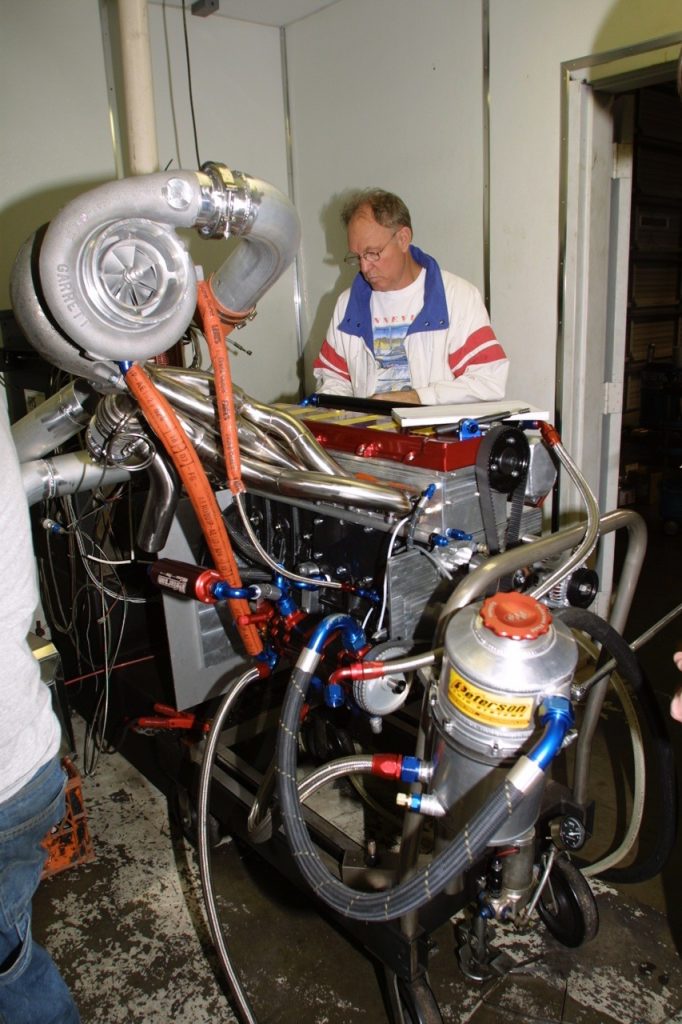For more than fifty years, the Bob Norwood Ferrari name has been tied to some of the fastest, most inventive automotive builds. Working from his Dallas shop, Norwood focuses on Ferraris built before the 1990s, using creative engineering to boost their speed, design, and capabilities.
From drag racing to endurance builds like the Aerotech, to restorations that bring long-neglected Ferraris back to life, his career has covered multiple areas of high-performance car building. Clients have brought Norwood ambitious projects, from pushing Ferraris far past their factory limits to restoring them to their original condition.
Norwood’s work has appeared on racetracks and in the hands of collectors. Through it all, he aims to deliver cars that perform well while maintaining their visual authenticity.

The Small-Town Start of a Big Racing Career
Norwood’s interest in cars began during his childhood in Kansas, where his father worked as a long-haul truck driver and his mother a home economics graduate. Life in a small rural town gave him room to experiment, and by age nine, he was already sneaking behind the wheel of the family’s 1950 Ford sedan, doing burnouts and breaking axles, then fixing them before his father came home.
To get his driver’s permit early, he took an after-school job on a local farm, and not long after, his father bought him a 1946 Ford coupe. The car had triple carburetors, alloy heads, and headers. These parts were removed and stored away, but Norwood soon reinstalled them, marking his first performance upgrades.
By his early teens, he was building a dune buggy from a 1939 Chevrolet and experimenting with any engine he could get his hands on. At 13, he took the ’46 Ford to the first NHRA Nationals in Great Bend, Kansas, running time trials despite only having a learner’s permit.
After the family moved to Washington, Norwood began working on more complex builds, including V8-powered hot rods and gassers. By high school graduation, he was earning money modifying classmates’ cars while running them at local drag strips.
In the early 1960s he raced a 1957 Corvette in the A/Sports class, winning consistently until a Chrysler dealer offered him a shop foreman job and a factory-backed race car. That led to years of racing high-powered Mopars, including one of the Northwest’s first stick-shift Hemi Satellites and a Sunbeam Alpine fitted with a Hemi engine.
By the late 1960s, he opened his own speed shop in Yakima, Washington, and secured a Hemi Cuda factory ride, finishing #2 nationally in 1971. Around this time, he began experimenting with nitrous oxide, inspired by its use in WWII aircraft, and met a man named Dale Armstrong. Their conversations about nitrous oxide led to a job in Los Angeles doing nitrous oxide research on a variety of engines
Norwood later moved to Dallas, Texas, where he turned his attention to exotic and European sports cars. That paved the way for the well-known, high-horsepower Ferrari builds that would later define his career.
Inside One of Norwood’s Most Ambitious Ferrari Builds
Of all the cars that have passed through his shop, Norwood points to the 308 Dragster as the project that tested his creativity the most. The build required a series of innovations that, in 1986, were not widely used.
It began with a Ferrari Testarossa engine (a flat 12-cylinder designed for rear mounting) which he re-engineered to fit in the front. The installation was done so cleanly that the engine was completely hidden under the nose of the car.
The supercharger was another first. Using a giant whole set turbo, he converted it into a supercharger and built a custom transmission to drive it. To reach the 62,000 RPM the supercharger needed from an engine turning at 10,000 RPM, he used helicopter gears for the step-up.
The intercooler ran on ice water, a cooling method just starting to appear in high-performance builds. A Lenco transmission connected to the engine, with a giant sprocket on the flywheel driving the blower belt, which ran to the front of the engine and into the blower gearbox.
Building Cars That Win on Both Form and Function
Of course, Norwood’s builds are never just about raw speed. He believes that performance and design should work together, not fight against one another.
Performance upgrades on rare Ferraris do not always get the same reaction from every enthusiast. Norwood says some love it, some dislike it, and some are not concerned either way. The feedback doesn’t keep him from doing the work the owner requests.
“There are lots of ways of doing things, but when it’s done right, it is both functionally correct and it looks esthetically pleasing,” he said. “It’s an elegant solution.”
The Art of Troubleshooting
Not every project goes smoothly, even for someone with Norwood’s experience. On one Testarossa, the owner wanted twin turbos and 1,400 horsepower. Norwood had built similar systems dozens of times before, but this one came with a hidden challenge.
The engine had been burned before arriving at his shop, which softened the cylinder heads enough from holding up under high boost. During his second round of work, he suspected overheating but continued troubleshooting because he had never seen an exact failure like that before.
Norwood removed and reinstalled the engine twice before he identified the cause. After replacing the cylinder heads, another issue appeared. The ignition system was not strong enough to fire spark plugs under 28 pounds of boost. High boost meant high cylinder pressure, and without enough spark energy, the ignition would fail.
The fix was to install a coil-on-plug ignition for each cylinder. Once complete, the car reached the 1,400 horsepower target the owner had requested, but Norwood admits it came at a loss.
“Sometimes a project is so extraordinarily difficult, you’ll just lose money to get the job done right,” he said.
Shop Secrets from a Lifetime of Ferrari Builds
Over the years, Norwood has come up with small but effective tricks that make his work faster and more precise. To cut a pipe perfectly straight, he tightens a hose clamp around it and cuts alongside the clamp. When a bolt needs to pass through a gasket but sits too deep in the socket, he wraps a nut in paper, drops it in the socket, and shortens the reach.
For long wires, he has someone hold the ends five feet away and twists them with a drill for a perfectly even twist. He’s learned these methods the same way most mechanics do, by figuring them out mid-project. On many Bob Norwood Ferrari builds, little time-savers like these save time without sacrificing quality.
Why the Classics Still Win Norwood’s Heart
Norwood’s view of the Ferrari brand has stayed the same since he first began working on them.
“They are trend setters, the leader in cutting-edge technology, they push boundaries,” he said.
That willingness to innovate is one of the reasons he has spent so much of his career working on them. He prefers models built before the 1990s, and as far as he knows, he is the only person to have turbocharged a Ferrari F50.
These earlier cars offer the type of engineering challenges and creative opportunities he enjoys most, and that preference determines the types of builds and restorations that pass through the Bob Norwood Ferrari shop.
Still, he does not modify rare or vintage Ferraris in ways that would change their identity. For those cars, he keeps the work true to the original design, and modern tools like 3D scanning or EV conversions have no role in that process. For custom builds, however, he regularly uses 3D scanning.
Norwood also sees AI as a valuable tool for restorations, particularly for uncovering information that might otherwise take hours to find or be nearly impossible to locate using older methods. Still, he warns that it’s not always correct, so any research would need to be verified before being used in a project.
A Legacy of Making Engines Do the Impossible
When looking back over his career, Norwood is most proud of his contributions to advanced engine technology. He has developed ways to produce extreme horsepower from automotive engines, often designing them from scratch. One of his favorites is a ProMod four-cylinder engine capable of 3,000 horsepower, which he designed entirely himself.
If he could give his younger self advice, Norwood says he would have sought formal training in thermodynamics, math, chemistry, and engineering early on. Instead, he had to pick up on information over time as specific projects required it.
“Now we’re saved by computers, especially AI, but it makes creativity more likely and elegant,” he said.
Today, the Bob Norwood Ferrari name stands for innovation, precision, and an unwavering commitment to keeping classic Ferraris performing at their best.


